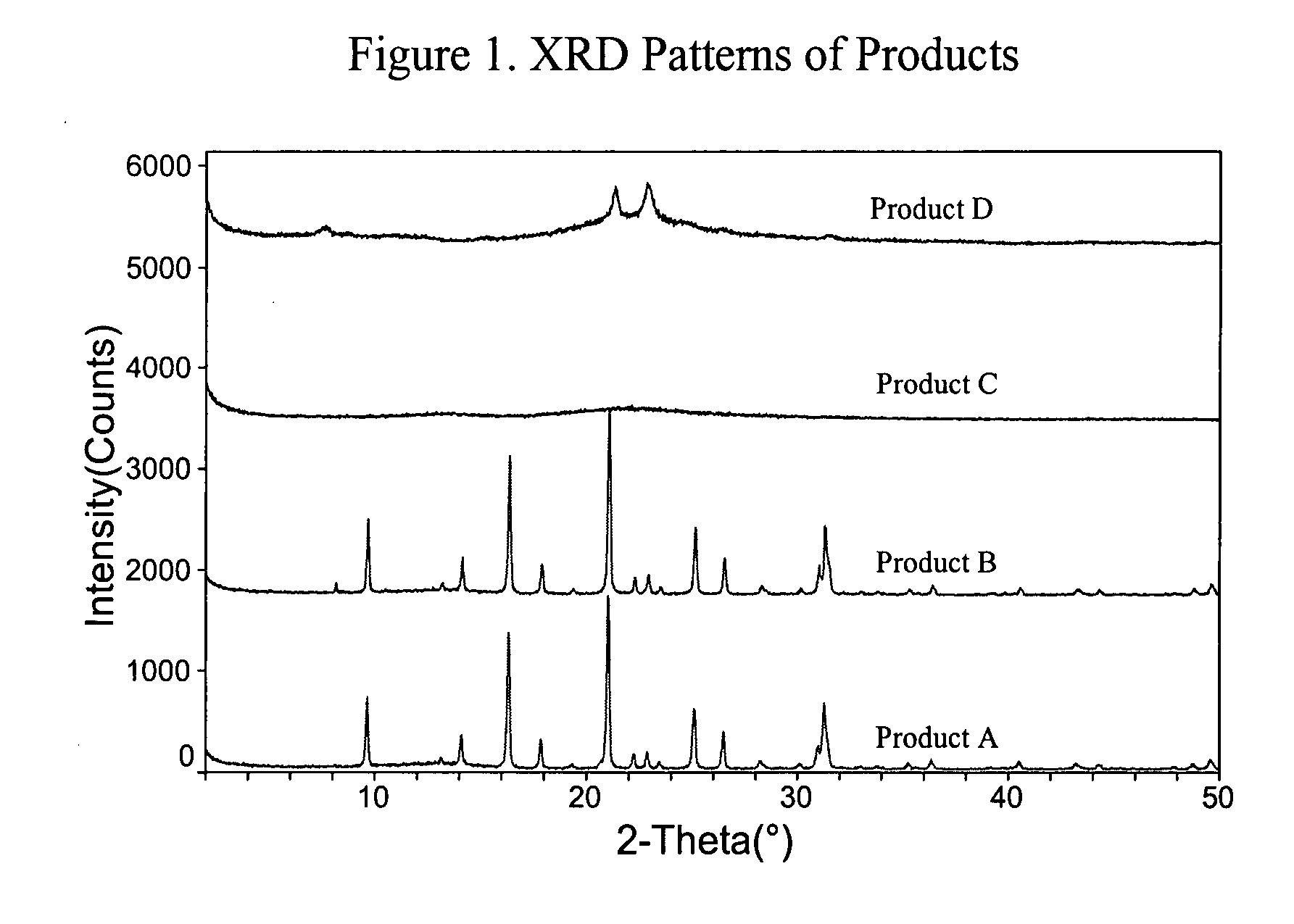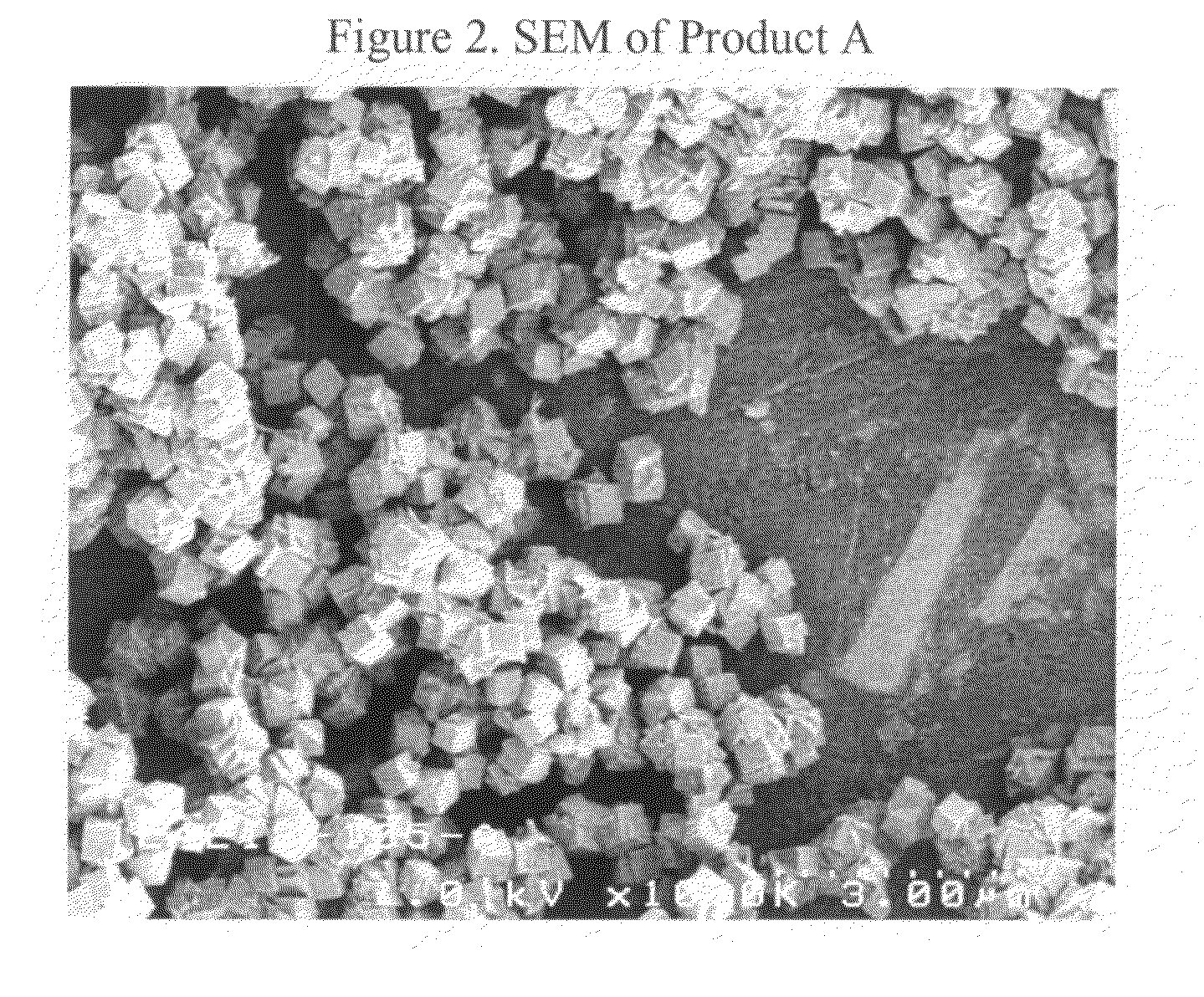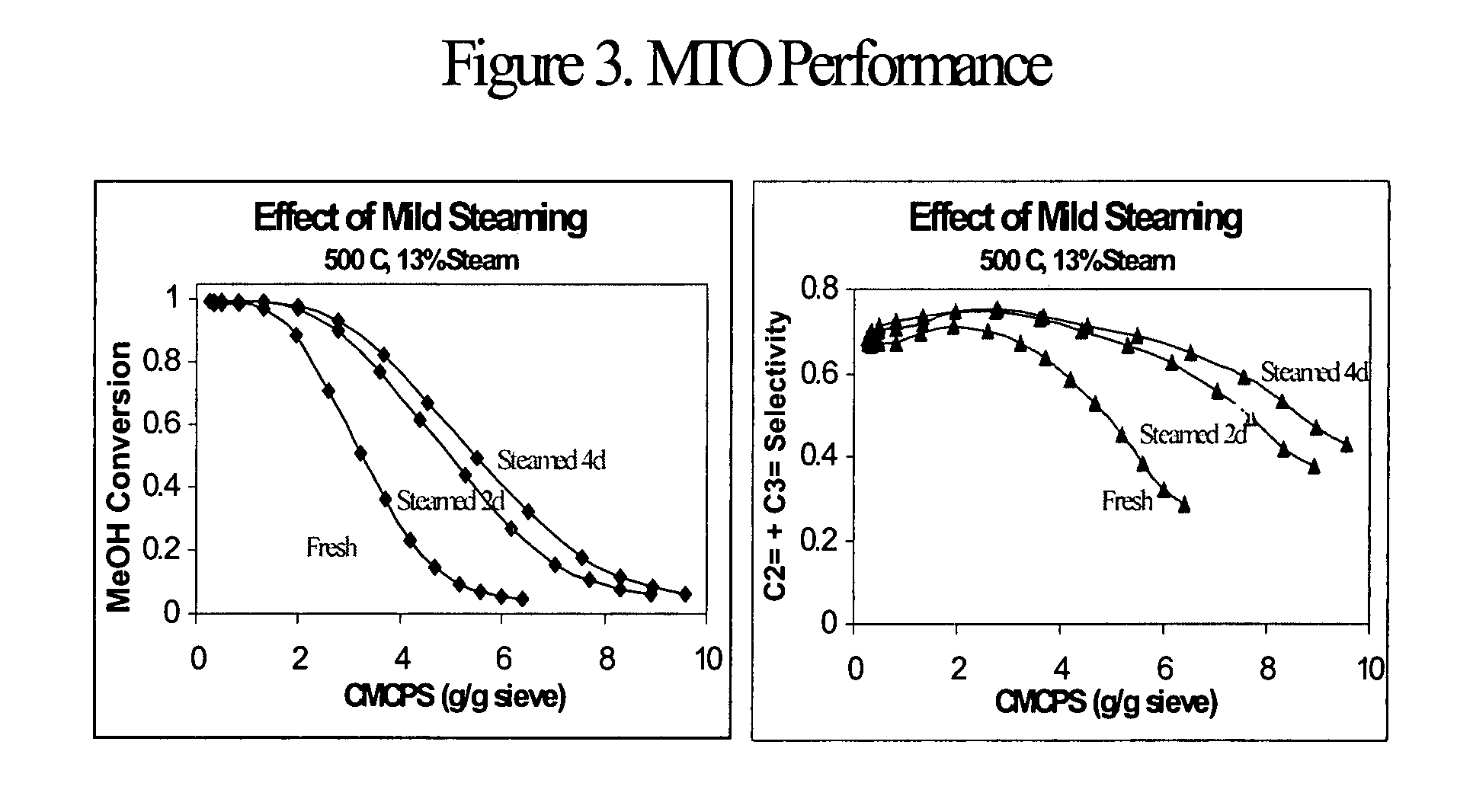Treatment of CHA-type molecular sieves and their use in the conversion of oxygenates to olefins
a molecular sieve and molecular sieve technology, which is applied in the direction of molecular sieve silica-polymorphs, physical/chemical process catalysts, silicon compounds, etc., can solve the problems of limiting catalyst life, increasing the potential for undesired secondary reactions, and lowering the diffusion rate of reactants and products
- Summary
- Abstract
- Description
- Claims
- Application Information
AI Technical Summary
Problems solved by technology
Method used
Image
Examples
example 1
Synthesis of High-Silica Chabazite (without the Use of Fluoride)
[0087]42.72 g of a 11.9 wt % aqueous solution of N,N,N-trimethyladamantammonium hydroxide (TMAAOH) was added to 9.24 g deionized water and then 8.04 g of Hi-Sil® 233 silica (PPG Industries, USA) was added to the mixture. The mixture was stirred until a uniform gel was produced. The Hi-Sil® 233 silica contained 0.53 wt % Na, 0.01 wt % K, 0.42 wt % alumina, and 82.2 wt % silica (Si / Al ratio of the material is 164) and hence the gel composition was as follows:
0.2 TMAA: (1 / 120)Na2O: (1 / 328)Al2O3: 1.0SiO2: 22H2O
[0088]The gel into four equal portions, designated A to D respectively, and each portion was crystallized as follows.
[0089]Portion A was aged at room temperature for 2 hours before 200 PPM colloidal LEV seeds (14 wt % solid content, Si / Al=6 for the sieve) based on the weight of gel were added. The resultant mixture was sealed in a 23-mL Teflon-lined Parr autoclave and was heated in a 170° C. oven for three days while ...
example 2
Calcination and NH4-Exchange
[0096]Product A was calcined using the following protocol: (a) ramp at 10° C. / min to 400° C. under flowing nitrogen and dwell for 30 minutes; (b) switch to flowing air and resume temperature ramp at 10° C. / min to 650° C. and dwell at 650° C. for 4 hours. The calcined sample was ion-exchanged twice with 5 wt % ammonium chloride solution. Elemental analysis yielded the following data for the calcined and exchanged sample (in wt %): Na, 0.0125; Al2O3, 0.531; and SiO2, 84.4, which corresponded to Na0.05Al1.00Si34.
example 3
Mild-Steaming
[0097]The calcined and NH4-exchanged sample from Example 2 was loaded into two frit-bottomed quartz tubes. The tubes were placed on the frit of a larger diameter quartz tube, with the frit located at the middle of the tube. The large tube, along with the two smaller tubes was vertically positioned inside a tube furnace. From the bottom of the large tube, nitrogen alone or nitrogen with steam in 660:100 molar ratio was fed into the tube. The total pressure was atmospheric. The temperature was ramped to 500° C. at 10° C. / min rate while the nitrogen feed was continued. After the temperature had stabilized at 500° C., feeding of nitrogen with steam commenced. The first sample was retrieved after steaming for 48 hours and the second after 96 hours. These samples, along with the unsteamed sample made in Example 2, were tested for MTO performance.
PUM
| Property | Measurement | Unit |
|---|---|---|
| pressure | aaaaa | aaaaa |
| temperature | aaaaa | aaaaa |
| partial pressure | aaaaa | aaaaa |
Abstract
Description
Claims
Application Information
 Login to View More
Login to View More - R&D
- Intellectual Property
- Life Sciences
- Materials
- Tech Scout
- Unparalleled Data Quality
- Higher Quality Content
- 60% Fewer Hallucinations
Browse by: Latest US Patents, China's latest patents, Technical Efficacy Thesaurus, Application Domain, Technology Topic, Popular Technical Reports.
© 2025 PatSnap. All rights reserved.Legal|Privacy policy|Modern Slavery Act Transparency Statement|Sitemap|About US| Contact US: help@patsnap.com



